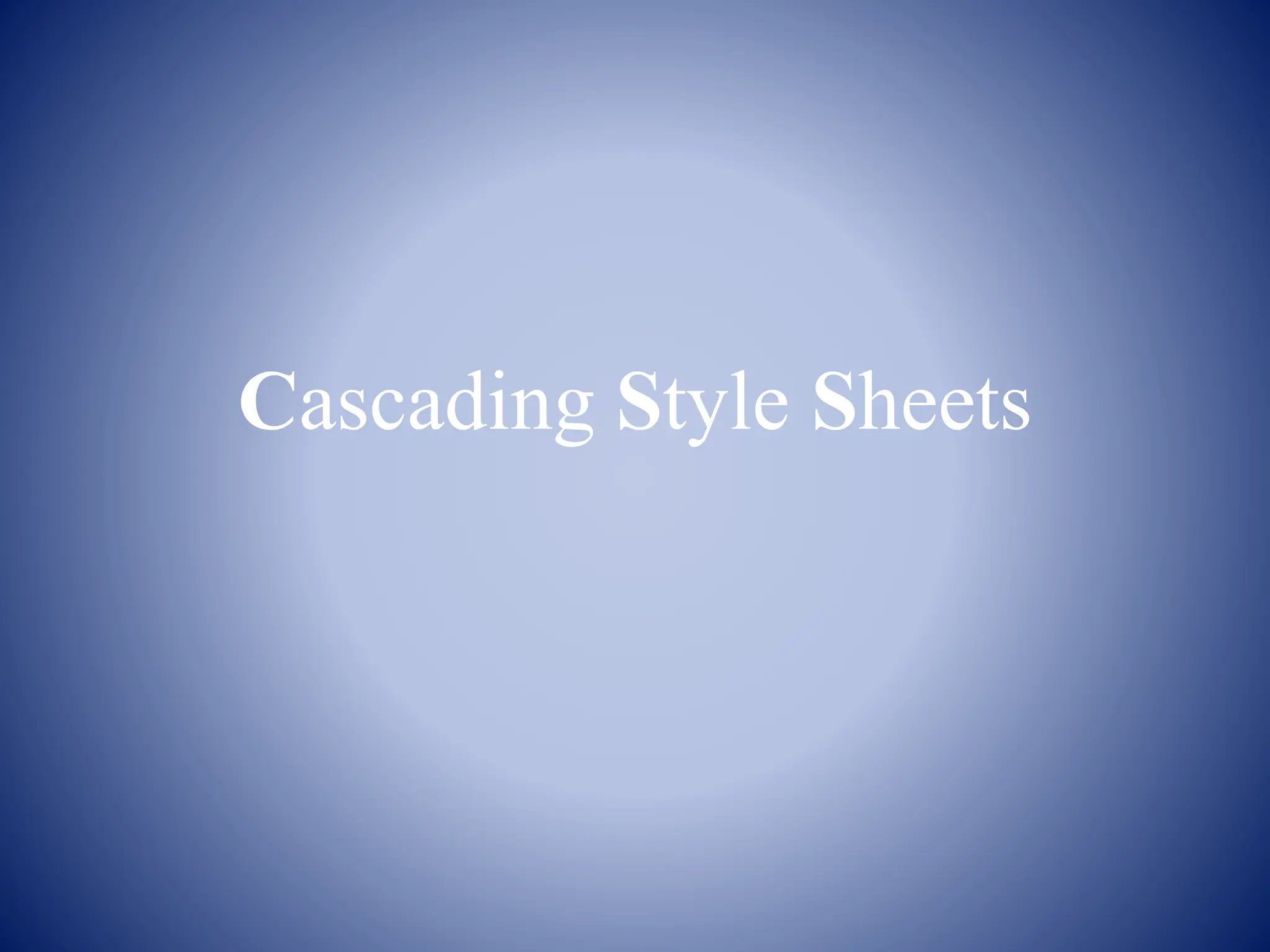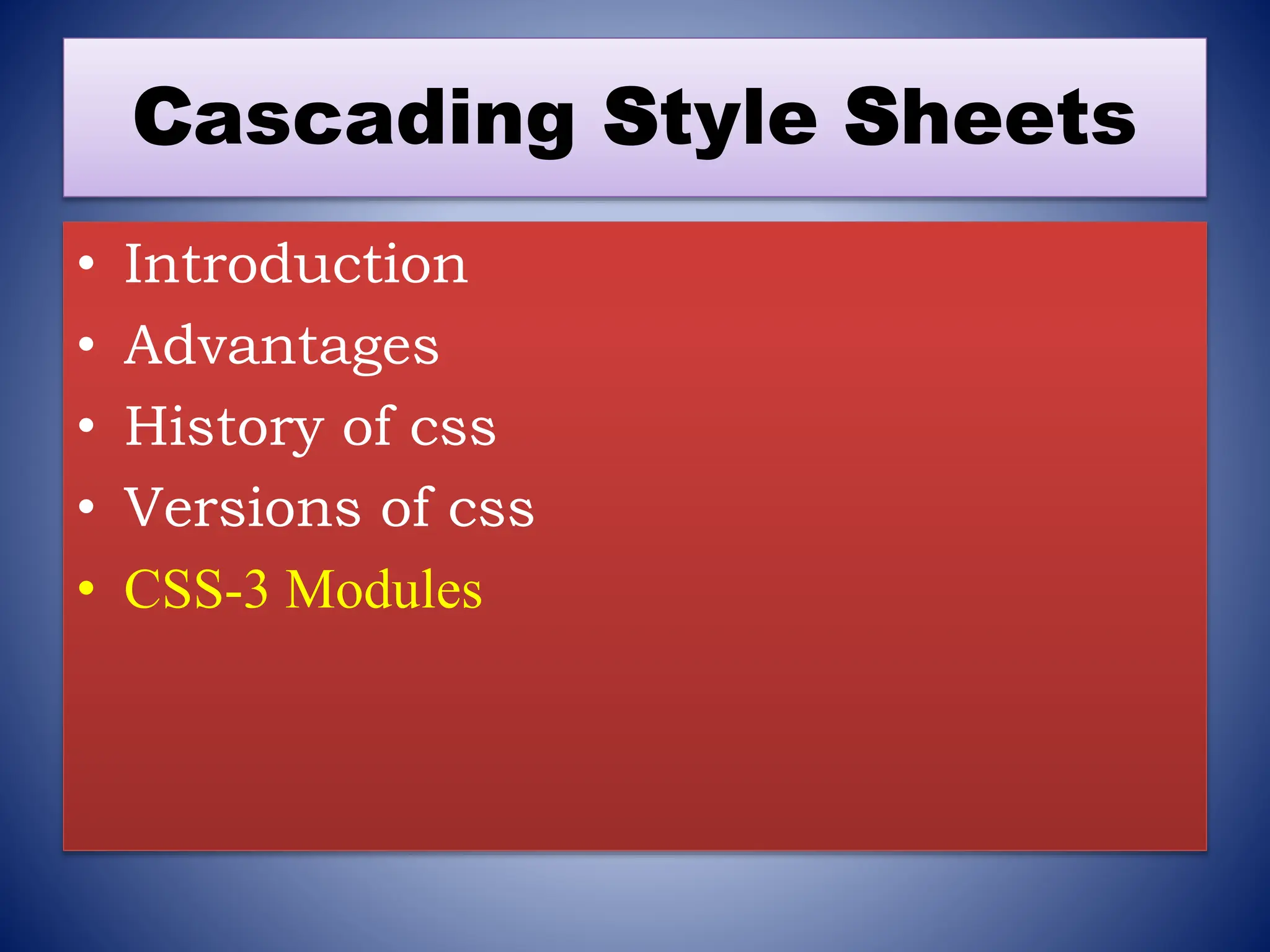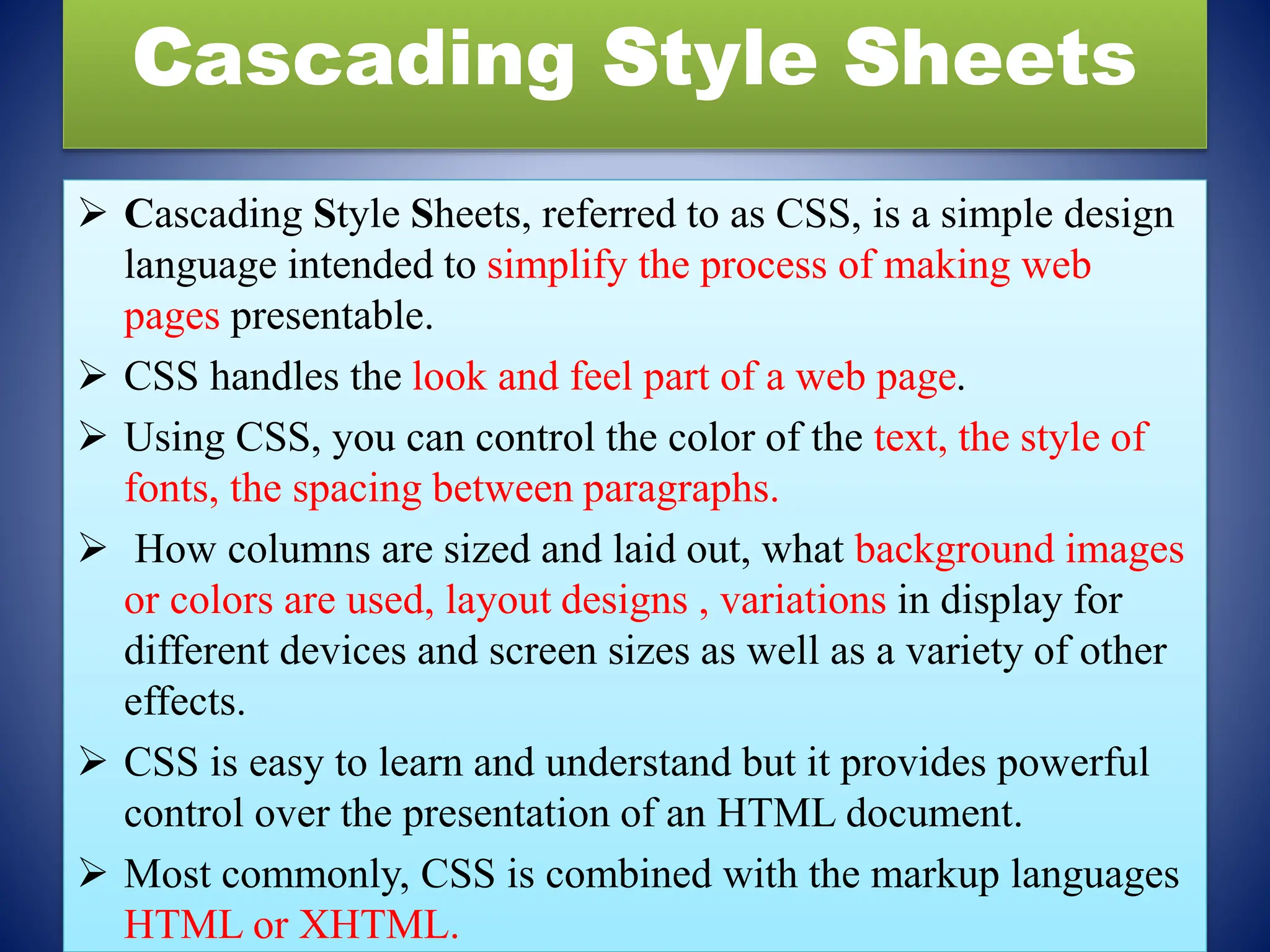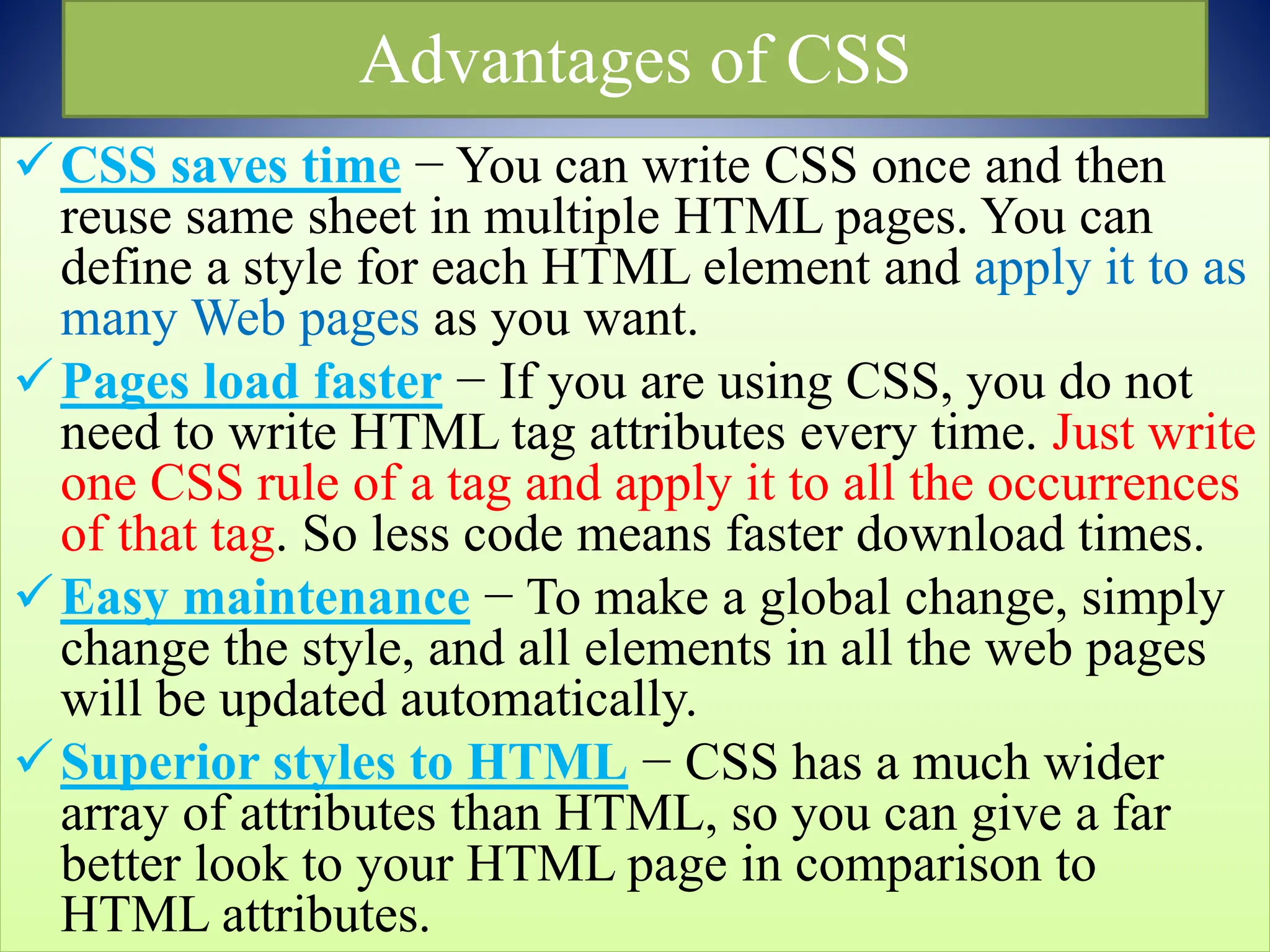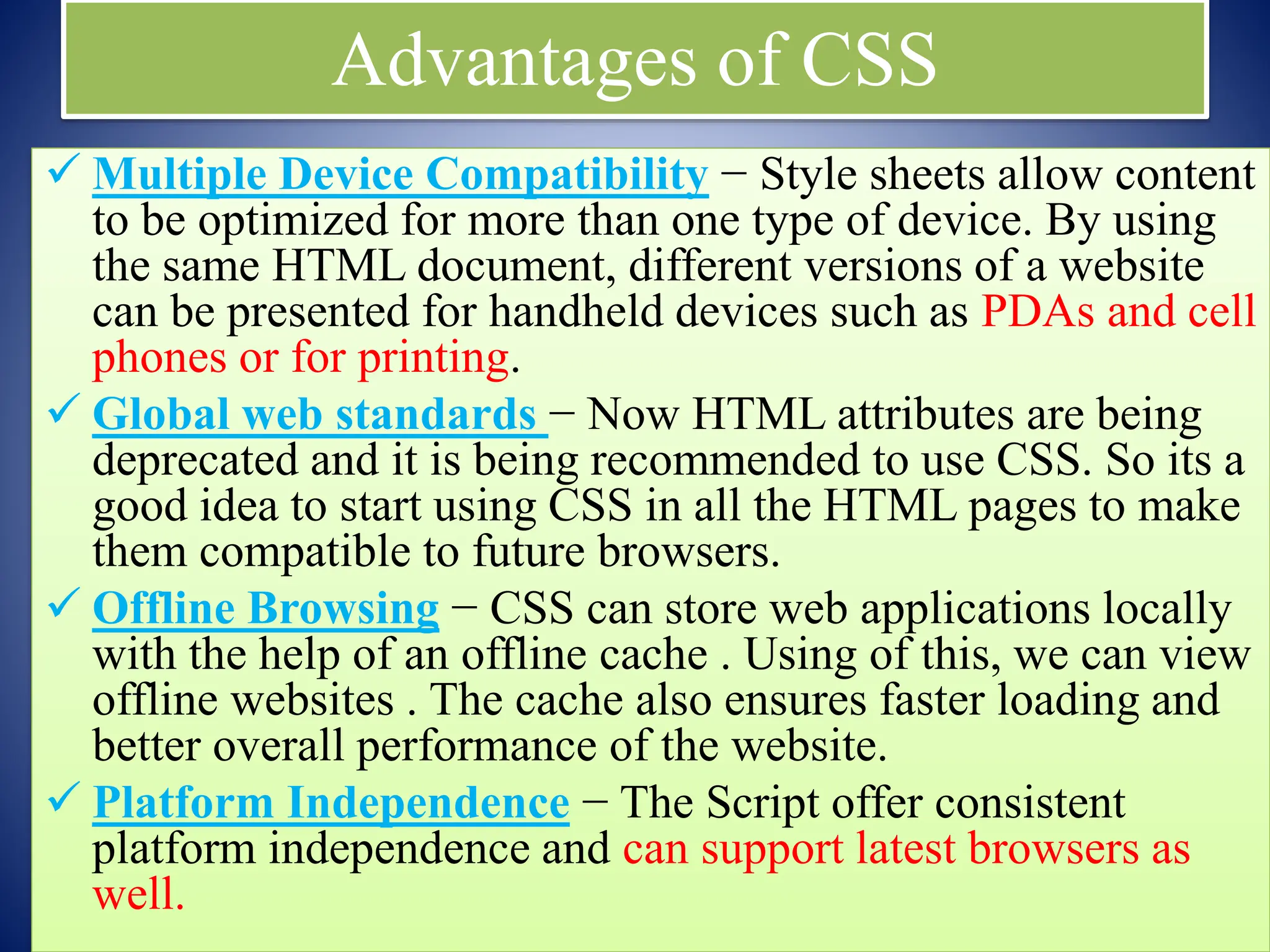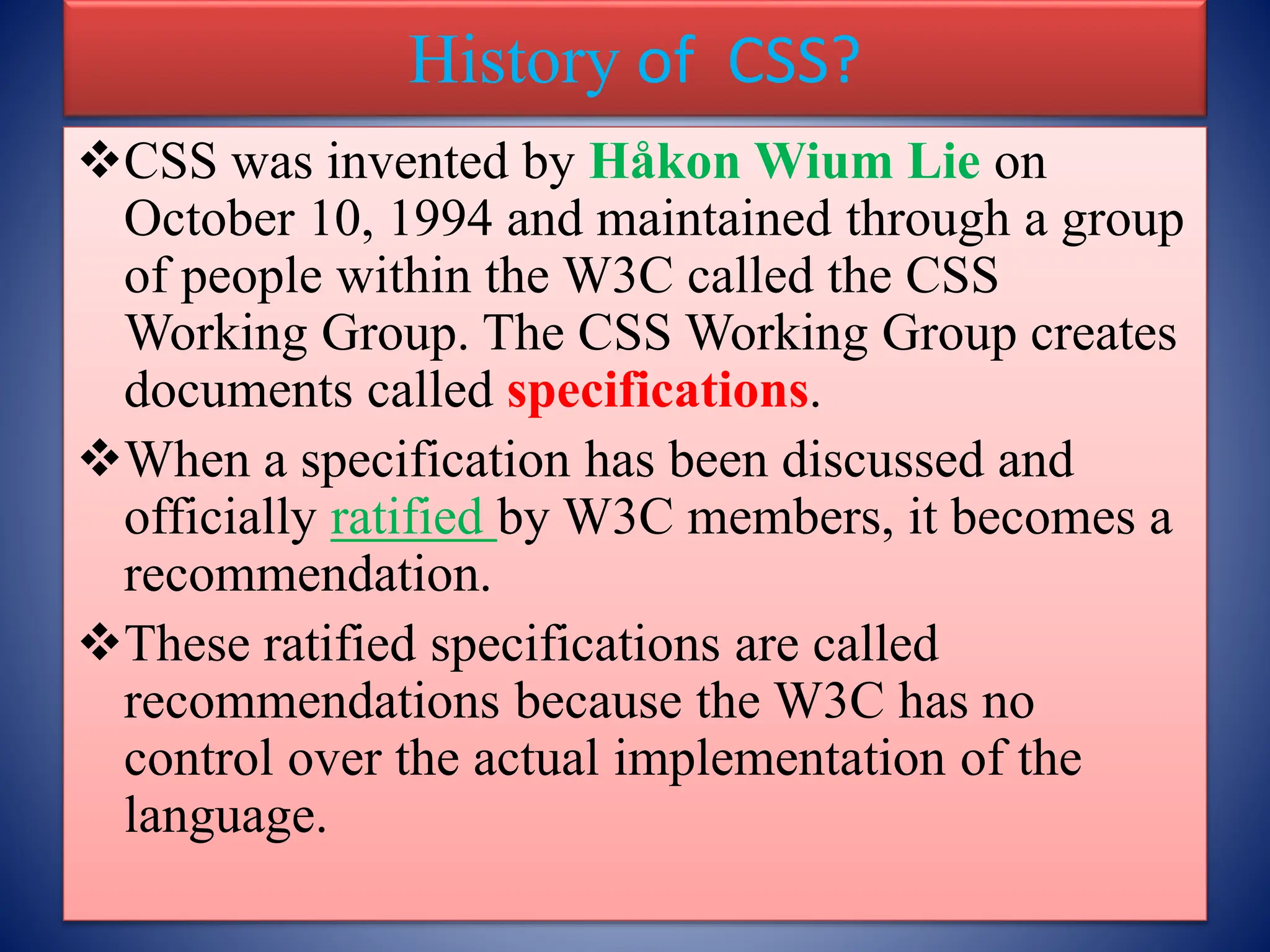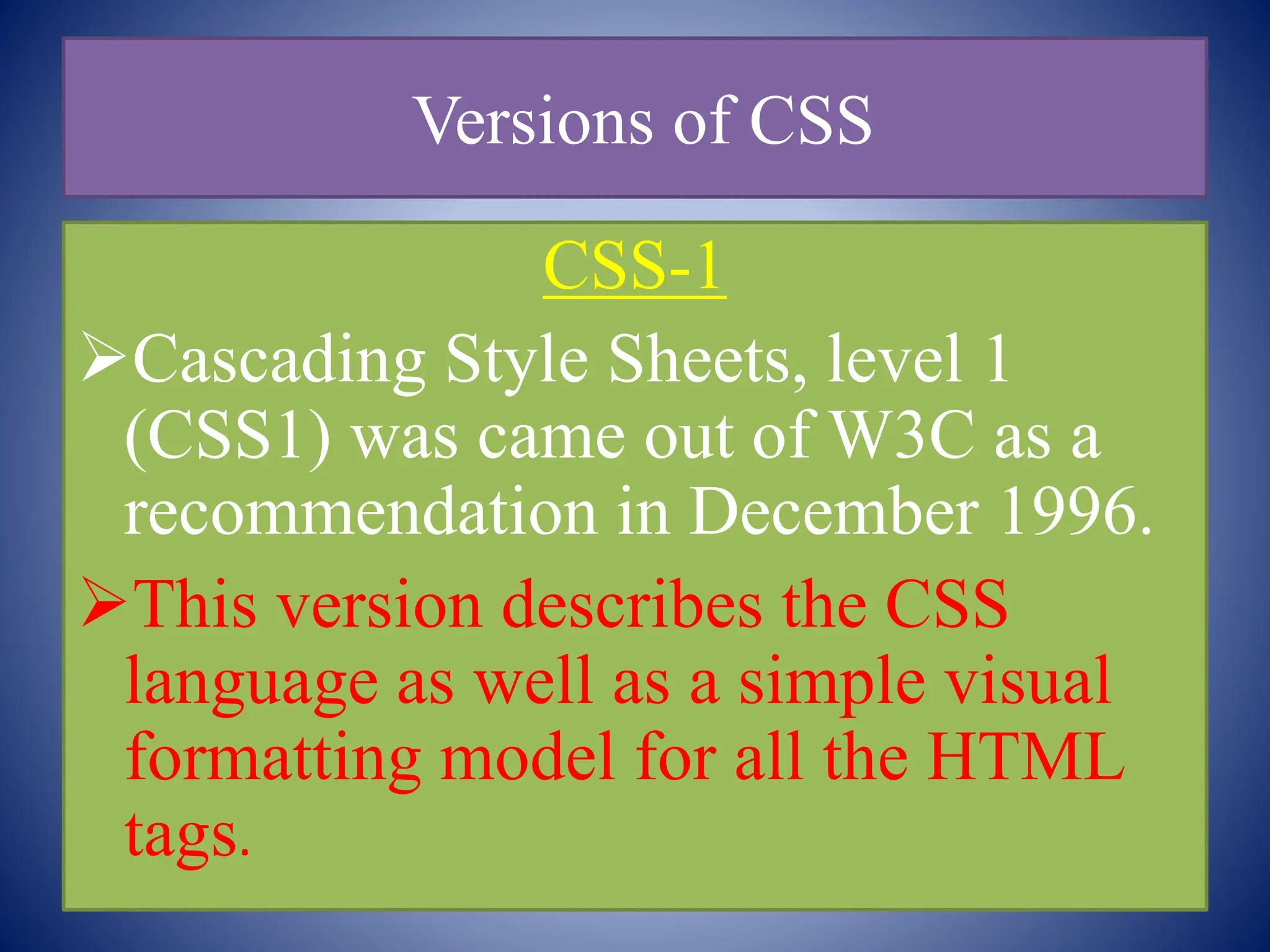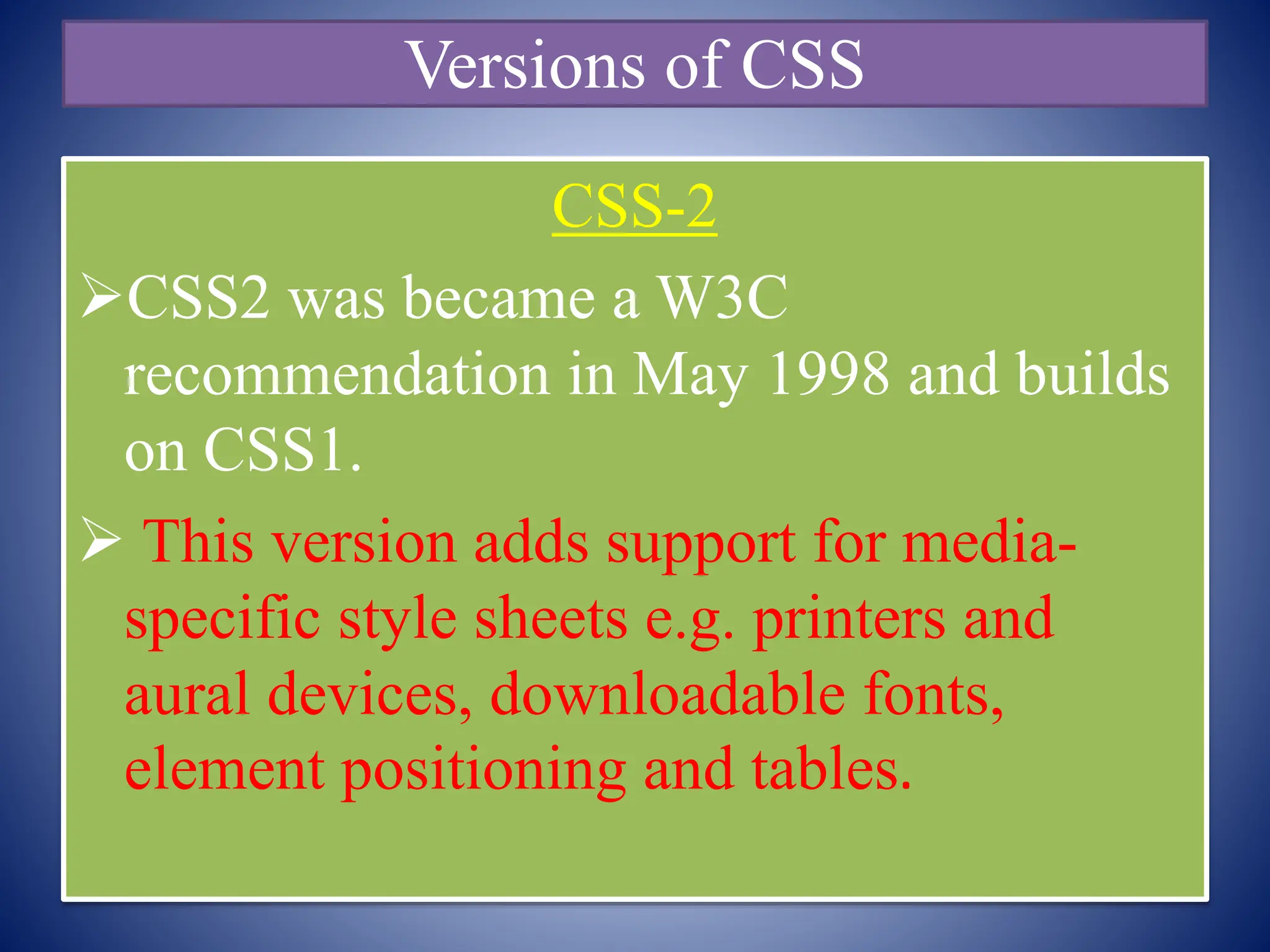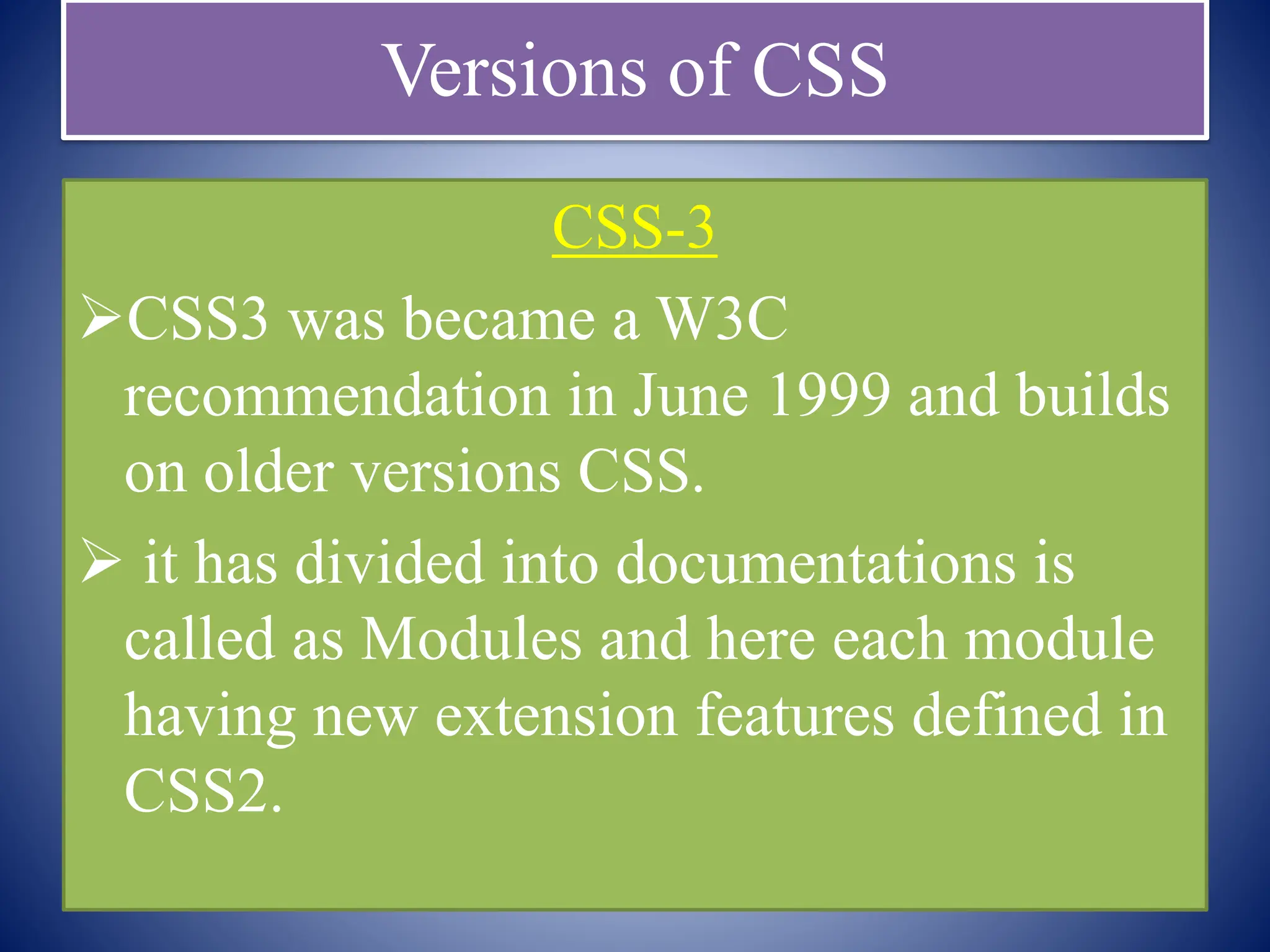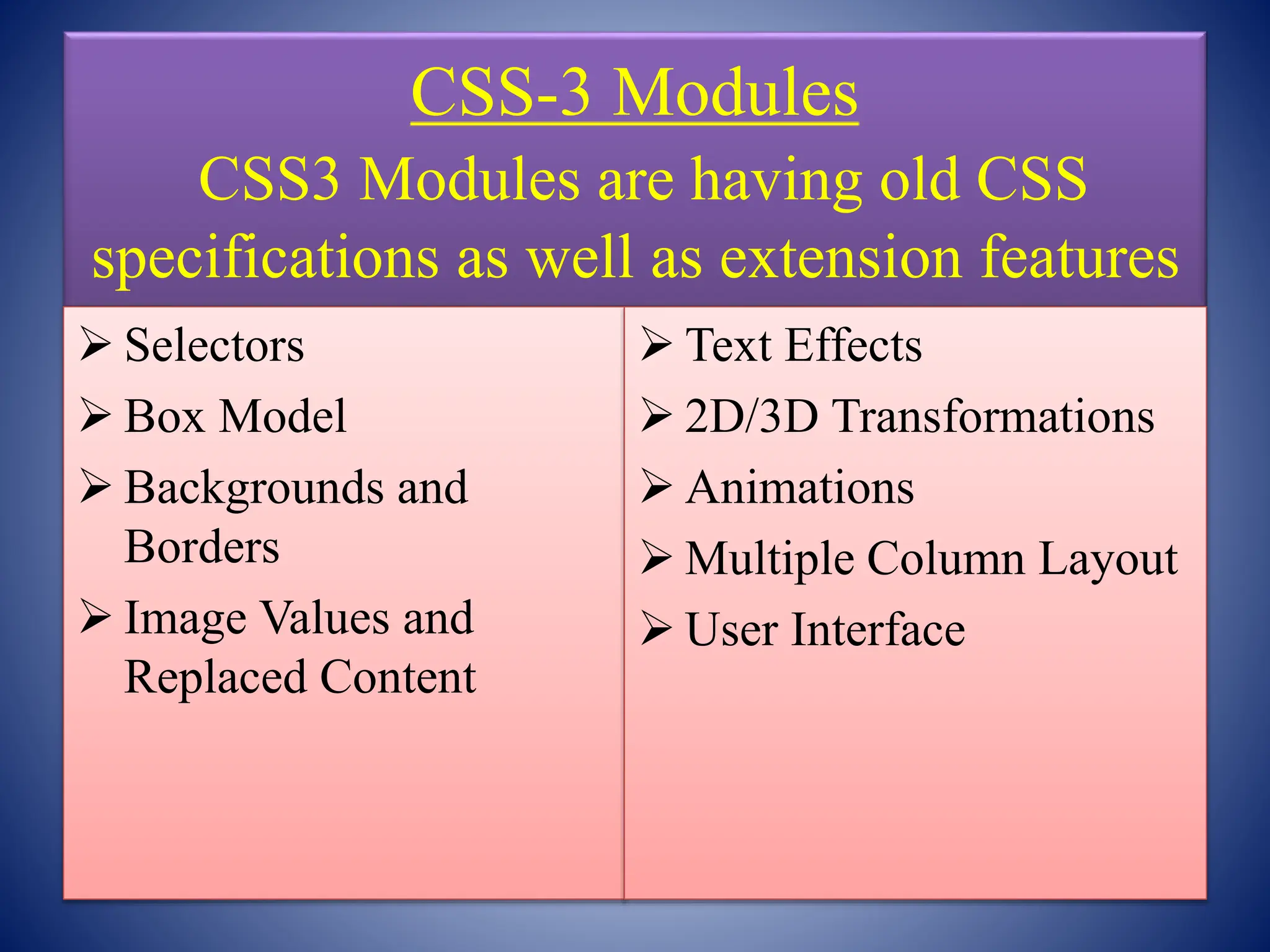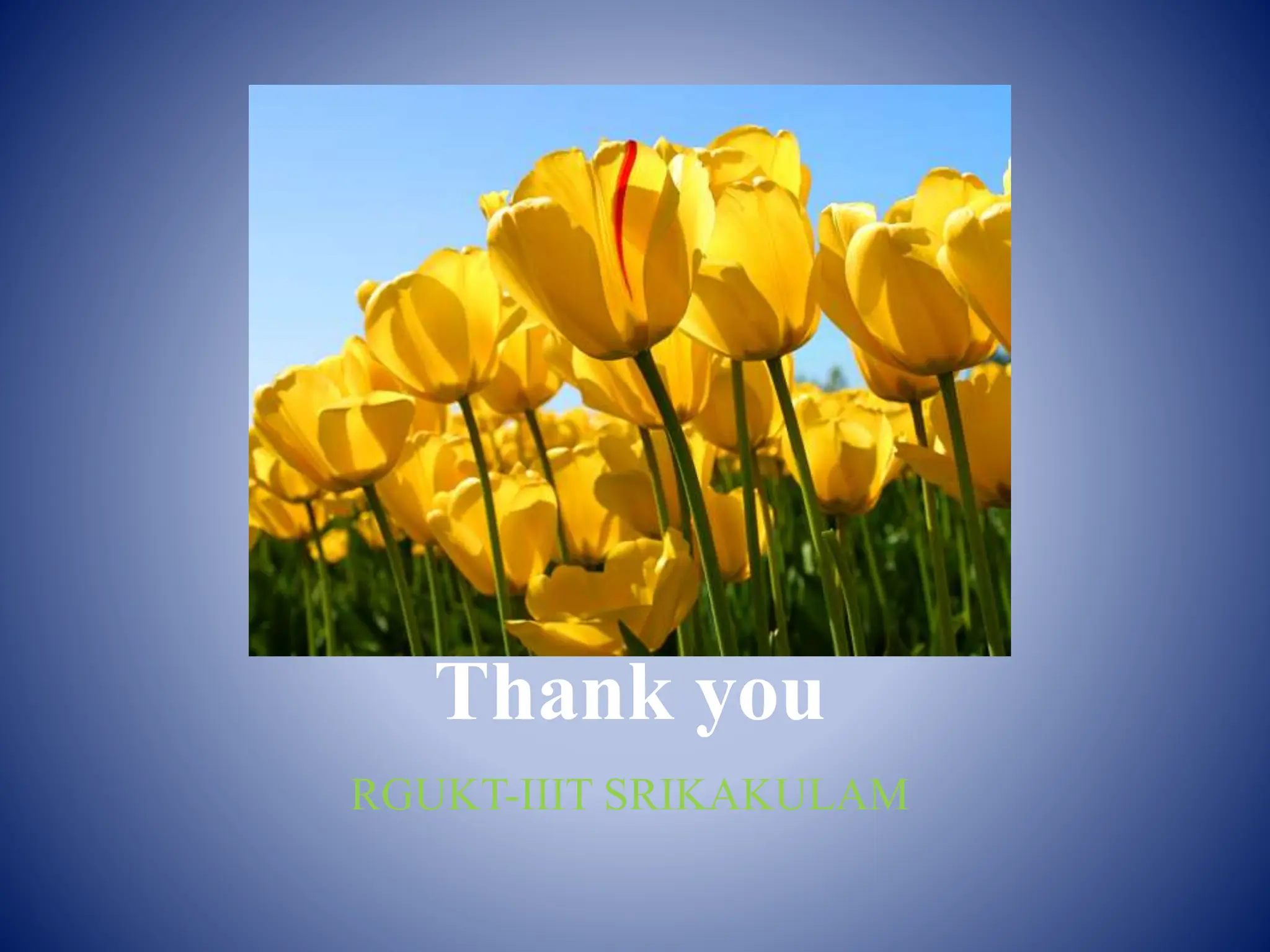Cascading Style Sheets (CSS) is a design language aimed at simplifying web page presentation, providing control over elements like text color, layout, and styles. CSS offers advantages such as time-saving, faster page loading, easy maintenance, and greater compatibility across devices, while being future-proof as HTML attributes are phased out. The history of CSS includes its inception in 1994, with several versions developed over the years, culminating in CSS3, which introduces modular improvements and new features.
